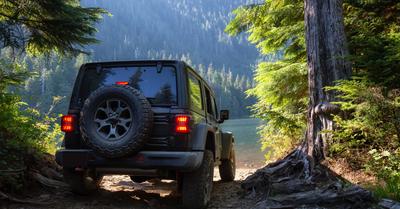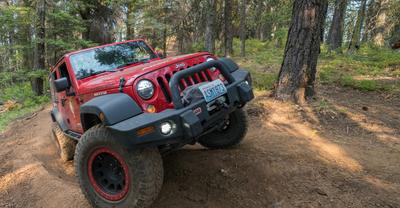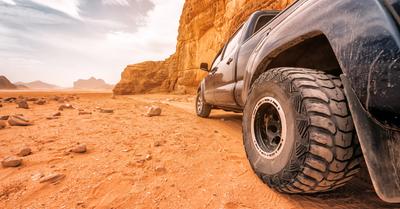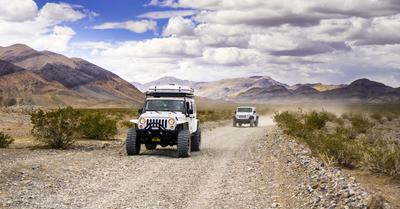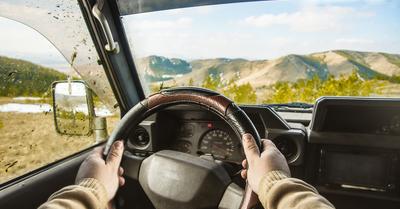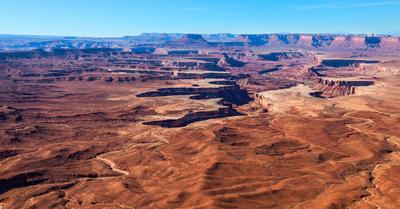Tackling dirt roads is allowed in most states, but they must be OHV trails. These areas allow off-road enthusiasts to explore at high speeds.
OHV trails are off-highway vehicle roads for ATVs, UTVs, trucks, and other off-road motorized vehicles to drive through legally. They are scattered throughout the country in deserts, forests, and mountains, with symbols indicating the type of vehicles allowed on each path.
We have toured various places throughout the country, and each state does have a different policy on what makes an OHV trail. But they all allow off highway vehicles, and this guide will explain exactly what they are, how to use them, and the best ones.
Key Takeaways
- OHV trails are dedicated off-road paths built and regulated for off-road vehicles like ATVs, side-by-sides, dirt bikes, motorcycles, Jeeps, etc.
- Our best ones include the Arizona Peace Trail, Bighorn National Forest, and Mill Creek OHV.
- The best vehicles on these trails are all-terrain vehicles, dirt bikes, and modified motorcycles.
This article may contain affiliate links where we earn a commission from qualifying purchases.
What Are OHV Trails?
Off-highway vehicle trails are paths or routes specifically designed for use by off-road vehicles such as dirt bikes, ATVs, and UTVs.
These trails can range in length and difficulty and can be found in various environments, such as forests, deserts, mountains, and other off-road areas. State laws and regulations can also determine who can ride on OHV trails and whether they are free to use.
OHV trails are always off-road and either natural or manufactured dirt pathways for all-terrain vehicles to drive on. Most designated roads are wide enough for four-wheel drive trucks, like Jeeps, to fit on too.
These public lands can be marked or unmarked, and government agencies, private organizations, or volunteers may maintain them. Depending on the location and laws, these roads are considered public land open to all off-highway vehicles.
What Do The Symbols On OHV Trails Mean?
States use signs with specific colors and symbols for consistency to avoid confusion with off-road drivers. Because they are public lands, signs are required for safety.
These signs will tell us what is allowed on each trail, and it’s common to see green and white signs or black and orange signs.
Green & White Signs
First, there are green and white signs with different symbols. If the sign is green with a white symbol or lettering, it will either have an “OHV route” symbol or arrows.
The route sign tells us the road ahead can be used as an off-road rider. This is found on public lands and highways that an off-road driver can operate on legally.
The arrow signs indicate where to turn when leaving the designated trail area onto the road or highway. These will be found at the beginning and end of trails or along highways.
Black & Orange Signs
The black and orange signs are used more on trails and off-road routes. The blazer sign tells any driver they are driving on a designated OHV trail.
We should look out for any restrictions and expect more challenging terrains because it’s an off-road trail. Directional arrow signs also tell the rider which way to go to remain on the trail.
What Are The Best OHV Motorized Trails?
ATV, UTV, and off-highway vehicle drivers can use the best OHV motorized trails. Below are some of the top options we have had the opportunity to review and test independently.
Arizona Peace Trail
The Arizona Peace Trail is one of the best four-wheel drive trails for OHV users. It’s located along the highway with fantastic scenery, sites, and high-difficulty lands.
This 675 mi trail loop system is in the Arizona desert, so we recommend bringing a map on the journey. It’s moderately challenging, and completing the entire trail would take nearly 40 hours.
Bighorn National Forest
Off-road enthusiasts who love motorized recreation and exploring public lands will enjoy the Bighorn National Forest. This national landmark spans 1.1 million acres through Wyoming with tons of OHV trails.
This government-protected forest land is one of the older designated trails in the United States. This means dedicated OHV routes, forest service, a parking lot, and picnic tables for guests to relax. They also allow other activities, and it’s a popular location for camping.
Mill Creek OHV Trails
Mill Creek is exceptionally underrated because of its location. But this landmark is 49.5 miles long and located in Ozark, Arkansas, a great place for activities like hiking and camping.
However, we recommend making reservations because the conditions can be extreme for inexperienced riders. It’s best to use caution, be careful, and prioritize safety on this advanced trail.
What Type Of Vehicle Can Drive On OHV Trails?
All OHV roads are different, so some are more suitable for specific vehicles than others. But in general, most designated roads can handle the following types of motorized vehicles.
All-Terrain Vehicles
All-terrain vehicles can be ATVs or side by sides, and they are the most common vehicle to ride on public lands. They are easy to operate and can ride for miles without any problems.
They are also regulated for use at night because they come with headlights and other vital features. Check with local state laws to see whether they can be operated without a permit.
Dirt Bikes
Dirt bikes are similar to ATVs and motorcycles. They require similar registration, but they are perfectly legal for off-road use.
Motorcycles
Motorcycles are easy to customize to get ready for the outdoors. They can be used to camp, but remember they also require a special permit to become legal for off-road use.
They can be adequately equipped for various activities, and operating them as a highway vehicle OHV is a lot of fun. Depending on the modifications, a motorcycle can be defined or established as a dirt bike.


